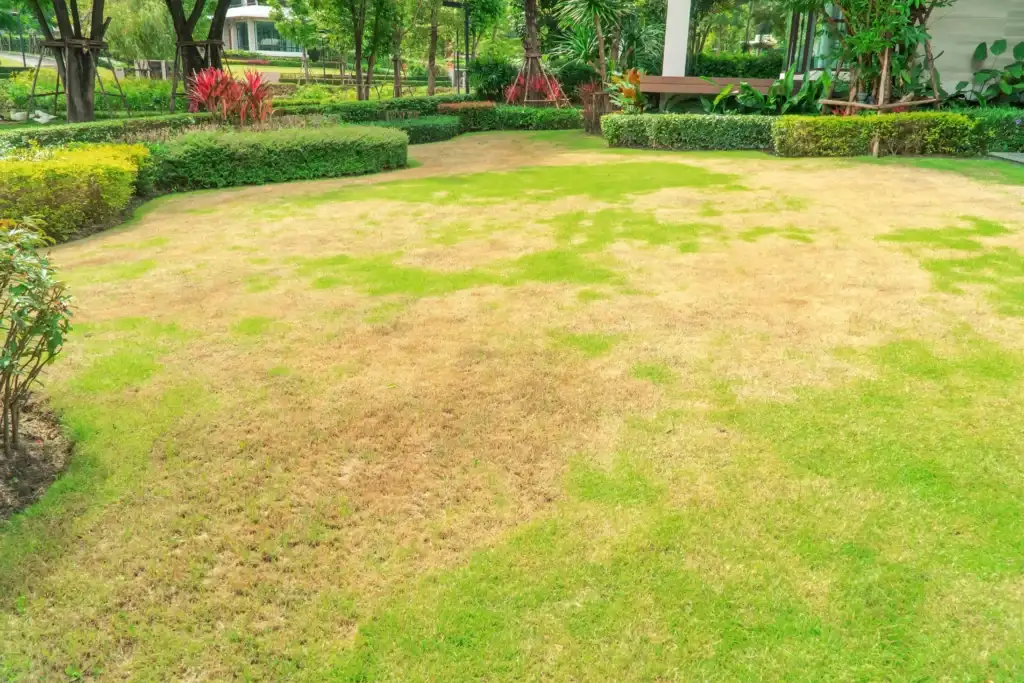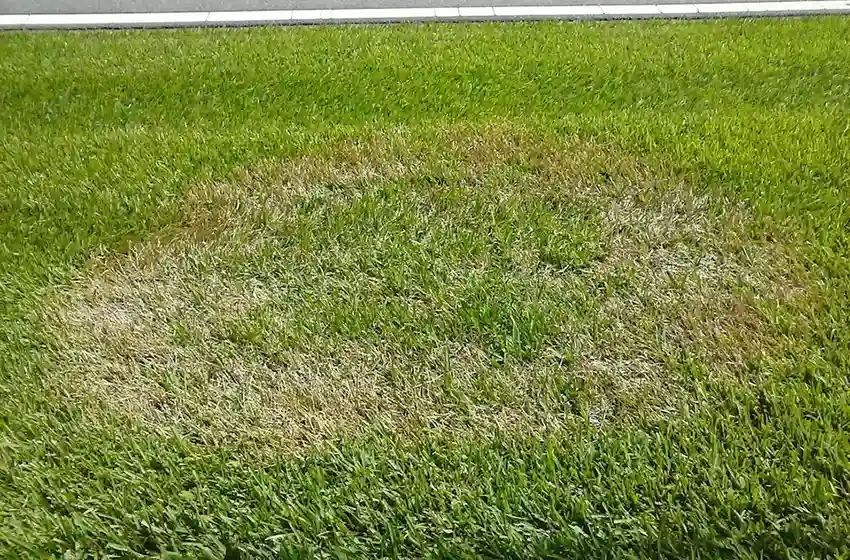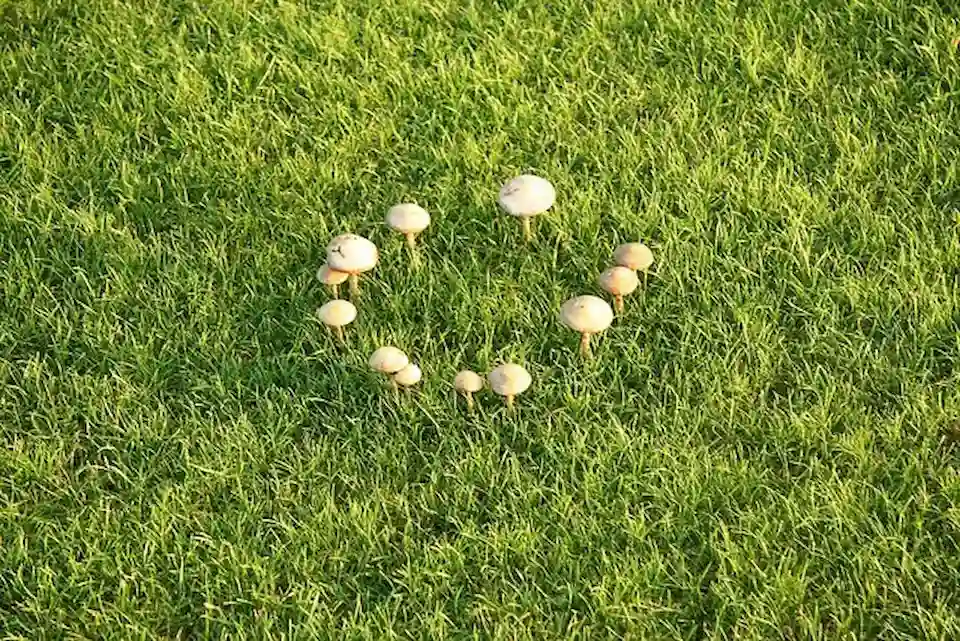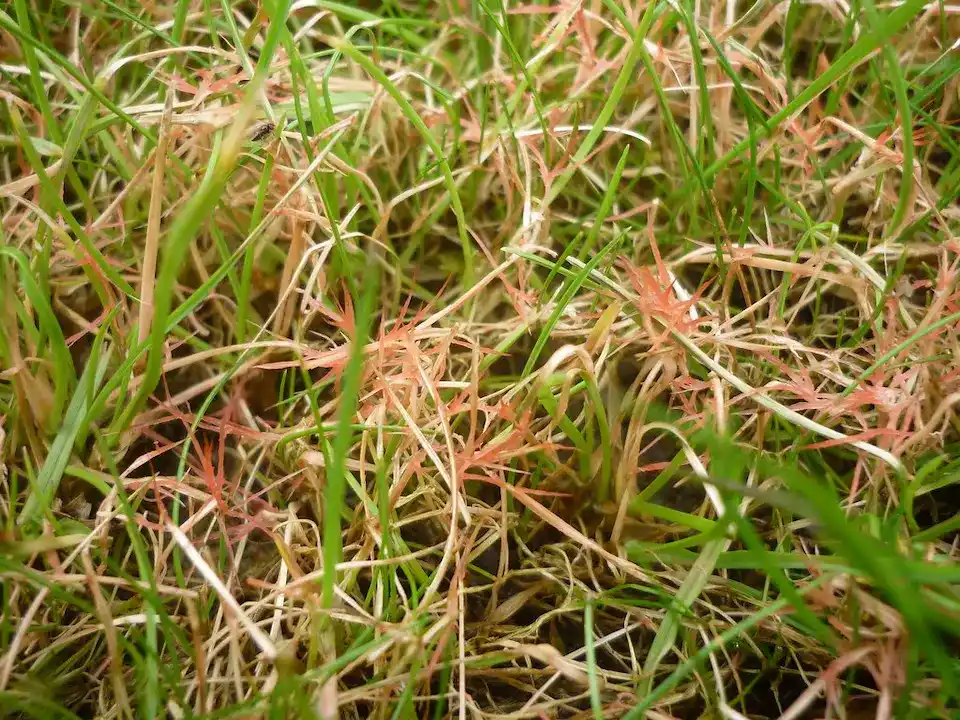Maintaining a lush and healthy lawn requires proper care and attention. However, despite our best efforts, lawns can be vulnerable to various diseases that can damage or even destroy the grass. These diseases can be caused by various factors such as weather conditions, soil quality, and improper lawn care practices. Our North Carolina lawn care company is sharing some of the most common lawn diseases that local homeowners may encounter.
Our lawn disease prevention experts at FortSmith Landscaping are providing tips on how to prevent and treat common diseases that wreak havoc on grasses in NC. Our goal is to help you identify the signs of lawn diseases and take proactive steps to maintain a healthy and beautiful lawn. Whether you are a seasoned lawn care expert or a new homeowner, we hope to provide valuable insights into how to protect your lawn and keep it looking its best all year round.
What Is A Lawn Disease and Why Is It A Problem?

A lawn disease is a condition that affects the health and appearance of lawn grasses. Turf diseases can be caused by various factors such as weather conditions, soil quality, and improper lawn care practices. Lawn diseases can manifest in a number of ways, including discoloration, thinning, and the development of patches or spots on the grass.
Lawn diseases are a problem because they can damage or even destroy the grass in your lawn, leading to unsightly and unhealthy conditions. Diseased lawns can be difficult to maintain, and the damage can be expensive to repair. Additionally, some lawn diseases can spread quickly and easily, potentially affecting other areas of your lawn or even neighboring properties.
Common Lawn Diseases in North Carolina
North Carolina lawns are known for their lush and verdant appearance. The warm and humid climate in North Carolina provides an ideal environment for a variety of grass species.
North Carolina cool season grass varieties include:
- Tall fescue and fine fescue
- Kentucky Bluegrass
- Annual and perennial ryegrass
Warm-season grasses found in North Carolina include:
- Bermuda grass
- Zoysia grass
- Centipede grass
- St. Augustine grass
All of these grasses are well-adapted to the local climate and soil conditions and can thrive in a range of growing conditions, from full sun to partial shade. However, while North Carolina lawns are known for their durability and resilience, unfortunately, they are not immune to lawn diseases.
Let’s explore some of the most common lawn diseases that can attack any of the above grass species that homeowners in North Carolina may encounter on their properties.
Gray Snow Mold

This lawn disease is caused by Typhula spp, a genus of fungi that includes several species known as snow molds, which are plant diseases that affect grasses in cold, snowy environments. Typically appearing in the winter or early spring as circular, gray patches on the grass, this lawn fungus thrives in wet weather and cold conditions and can damage the grass’s roots, leading to thinning and discoloration.
Brown Patch

Caused by the fungus Rhizoctonia Solani, this fungal disease typically appears in the early summer as irregular brown patches on the grass. Thriving in high humidity and heat, the brown patch can spread quickly, leading to large areas of damaged or dead grass.
Dollar Spot
Dollar spot is a turf disease caused by the fungus Sclerotinia Hmeocarpa. It tends to appear in the summer as small, circular patches of straw-colored spots on the grass. This grass fungus thrives in hot and humid conditions and can damage the grass’s roots, leading to an entire lawn of thin grass suffering from discoloration.
Fairy Ring

This lawn disease is caused by various fungi, including Marasmius oreades and Lycoperdon spp. Fairy ring typically appears in the summer as circular or semicircular rings of dark green grass, with or without mushrooms growing in the center. Most commonly found in areas with high organic matter, such as compost or excess thatch, this grass fungus is known to damage the roots of the grass, making them thinner and affecting its coloring.
Powdery Mildew

Caused by various fungi, including Erysiphe Graminis and Blumeria Graminis, powdery mildew tends to appear in the summer months as a white, powdery coating on the grass leaf blades. The fungus thrives in humid, warm conditions and can damage the grass by reducing photosynthesis and causing discoloration, leading to dead turf caused by drought stress.
Pythium Blight
This lawn disease is caused by the fungus Pythium spp. It typically appears in the summer as circular or irregularly shaped patches of water-soaked grass and loves hot and humid conditions that allow it to spread quickly, leading to large areas of damaged grass and disease development.
Red Thread

The fungus Laetisaria Fuciformis causes what is known as a red thread. This grass disease presents itself in the spring or fall as pink or reddish-brown patches on the grass blades. Fungal diseases like red thread survive in cool and humid conditions and can damage the grass plant and roots.
Rust Diseases
This fungal lawn disease is caused by various fungi, including Puccinia spp. and Uromyces spp. Typically appearing during the summer as orange or yellow rust-colored patches on the grass blades, rust diseases prosper in warm and humid conditions and can damage the grass by reducing photosynthesis and causing discoloration.
Tips for Preventing and Treating Lawn Diseases
A lush and healthy lawn is a source of pride and enjoyment for many homeowners, but it can be vulnerable to various diseases that can damage or even destroy the grass. Lawn diseases can be caused by a range of factors, including weather conditions, soil quality, and improper lawn care practices. However, with proper care and attention, homeowners can take proactive steps to prevent and treat lawn diseases.
Proper Watering and Fertilization Techniques
Grass requires regular watering to maintain its health, but too much or too little water can lead to problems. Overwatering can create ideal conditions for the development of lawn diseases, while underwatering can cause the grass to wilt and die.
Fertilization provides essential nutrients to the grass, promoting healthy growth and improving its resistance to diseases and pests. However, over-fertilization can also be detrimental to the lawn, leading to thatch buildup and weakened root systems.
Mowing Practices
Mowing practices are also essential for maintaining a healthy lawn. Grass should be mowed regularly, but not too short, as this can weaken the root system and make the grass more vulnerable to lawn diseases. Additionally, dull mower blades can tear the grass rather than cut it cleanly, leading to stress and disease.
Soil Aeration and Drainage
Soil aeration and drainage are critical for promoting healthy root growth and preventing lawn diseases. Compacted soil can lead to poor air circulation, leading to weak and shallow root systems.
Soil aeration involves removing small plugs of soil from the lawn to allow air, water, and nutrients to penetrate the soil more effectively. Good soil drainage is also essential, as standing water can create ideal conditions for the growth of lawn fungal diseases as a result of overly wet conditions.
Tips for Treating Lawn Diseases
Whether you’re dealing with a small patch of diseased grass or a widespread infestation, our tips for treating lawn diseases will help you take action and restore your lawn to its healthy and vibrant state.
Once you identify lawn diseases, applying chemical treatments and organic treatments are two potential approaches to lawn disease treatment. Each approach has its benefits and drawbacks, and the choice of which method to use will depend on the specific situation and goals of the homeowner.
Chemical Treatments
Chemical treatments involve the use of synthetic chemicals to treat lawn diseases. These chemicals are typically formulated to target specific diseases or lawn pests, and they can be highly effective in eradicating the problem.
Organic Treatments
Organic treatments rely on natural or plant-based materials to treat lawn diseases. These treatments are typically less harmful to the environment and human health than chemical treatments, and they can be effective in controlling some lawn diseases.
FAQs About Lawn Diseases in North Carolina
How do I know if my Lawn has a disease?
Identifying the signs of lawn disease is crucial for preventing and treating lawn diseases effectively.
Here are some common symptoms to look out for:
- Discoloration
- Thinning
- Patches or spots
- Mushrooms
- Wilted or distorted grass blades
- Dead or dying grass
If you notice any of these signs on your lawn, it is important to take action promptly to prevent the disease from spreading and causing further damage. Seeking professional help from a Raleigh area lawn care service can provide valuable expertise and resources to diagnose the disease accurately and implement effective treatment options.
Can a lawn disease go away?
The answer to this question depends on the specific type of lawn disease and the severity of the infection. In some cases, mild lawn diseases can go away on their own without treatment, especially if the lawn is healthy and well-maintained. However, in most cases, lawn diseases require intervention to prevent them from spreading and causing further damage.
It is essential to take action promptly when dealing with lawn diseases to prevent the disease from spreading and causing further damage. With proper care and attention, most lawn diseases can be treated successfully, allowing the grass to recover and thrive once again.
What should I do if I suspect my lawn has a disease?
If you suspect that your lawn has a disease, it is important to take action promptly to prevent the disease from spreading and causing further damage.
Here are some steps to follow:
- Identify the symptoms
- Research the symptoms
- Implement preventive measures
- Seek professional help from lawn disease prevention experts
- Follow the recommended treatment
Don’t Let Lawn Disease Ruin the Beauty of Your Yard. Contact FortSmith Today to Prevent and Treat Common Lawn Diseases in North Carolina.
Your yard is a source of pride and enjoyment, providing a beautiful and functional outdoor space for relaxation, recreation, and entertainment. However, lawn diseases can quickly ruin the beauty of your yard, damaging or even destroying the grass. The good news is that with proper care and attention from experts in lawn care, lawn diseases can be prevented and treated effectively.
At FortSmith Landscaping, we understand the importance of a healthy and beautiful lawn. That’s why we offer a comprehensive range of lawn care services to prevent and treat lawn diseases, including identifying the signs of lawn disease, implementing preventive measures, and providing effective treatment options.
Contact us today to schedule a lawn care consultation by calling (919) 288-8495 or filling out our contact form below.
